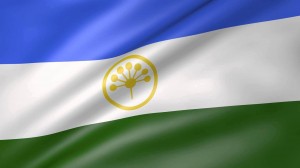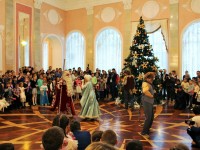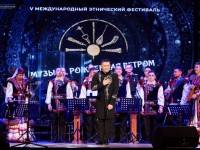The flag of Bashkortostan was adopted 29 years ago
The flag was adopted on 25th of February in 1992, in the format-ratio of 1:2, on 12th of February in 2003 the format was changed to 2:3.
The old format-ratio of 1:2 goes back to the flags of the Soviet Union. The Bolshevist flags were almost designed in 1:2 format, as a visible break with the monarchist and bourgeois format-ratio of 2:3. The flag shows three horizontal stripes in blue, white and green and a golden Kurai Flower in the middle of the white stripe. Blue stands for the integrity and virtue of the Bashkirs and is the colour of the Turkic peoples. White stands for peacefulness, openness and a willingness to compromise. Green stands for freedom and eternal life and is the color of Islam. The Kurai Flower (Salsola Kali) is a symbol of friendship, and its seven petals represent the seven tribes as the foundation for the unity and stability of the Bashkirs. The flags, which were used in the Soviet era corresponded all to the same pattern as it was intended for the Soviet Autonomous Republics: Between 1923 and 1937 frequently only a single-coloured red bunting with a golden inscription, showing the name of the country. Sometimes only as a shortcut, sometimes the full name, sometimes only in Russian or even multilingual. From about 1937 hammer, sickle and star were sometimes added. From about the mid-50s multicolored flags were introduced for the republics of the Soviet Union, whose knitting patterns had to be taken over by the subordinated autonomous Soviet republics.








